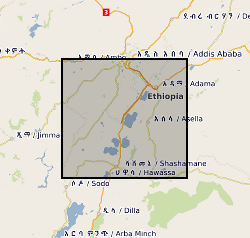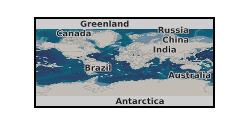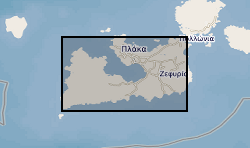Volcanic rocks
Type of resources
Topics
Keywords
Contact for the resource
Provided by
Years
Formats
Representation types
Update frequencies
-

These data contain 1) load string compliance mechanical data used to retrieve the absolute sample deformation (Compliance folder); 2) Acoustic emissions data (RawData_AEs folder); 3) Compaction data of the granular packs (RawData_Press folder). These data we used for the publication by Zorn et al., 2024 (https://doi.org/10.30909/vol.07.02.765783). A PDF document detailing further information of the contents of each folder entitled "Zorn_Compaction_Data_Overview" is provided. All data were collected and analysed at LMU Munich on samples from the Eifel Volcanic Field (Germany) and from the Krafla caldera (Iceland). The geographical location of the samples collected is of no relevance to this study, as the samples were selected for their physical attributes. All data were collected and analysed in 2023 and 2024. Loose fragments of volcanic rock from the Eifel Volcanic Field or Krafla caldera were placed in a metal cup and progressively loaded axially to a target load before either 1) removing the load (called "dynamic stressing tests"); or 2) holding the load for 6h or 5 days (called "dynamic followed by static tests"). All experiments were conducted using an Instron uniaxial press, and all displacement data are corrected for the deformation of the loading column (compliance). During each experiment, acoustic emissions sensors attached to the side of the cup to monitor cracking events These data were collected to understand the compaction behaviour of volcanic edifices that consist of interbedded layers of variably loose/coherent materials.
-

Glass major element geochemical data on Late Quaternary tephra deposits from the Main Ethiopian Rift volcanoes. These data were acquired using Electron Microprobe Analysis, and secondary standard data (MPI-DING glasses) are also included. All samples were given a unique name related to the outcrop from which they were obtained. Outcrops are named "MER" followed by a 3-digit number (e.g. MER153). Samples from a given outcrops are given the same name, followed by a letter (e.g. MER153A). Outcrop localities, with GPS coordinates (Lat Long WGS84) and brief description of the geology are also included. These data are published as Supplementary Files to a paper published in Journal of Volcanology and Geothermal Research: Fontijn et al (2018), https://doi.org/10.1016/j.jvolgeores.2018.02.001.
-

The project is aimed at understanding how a number of economically and geologically important chemical elements partition themselves between the silicates of the outer parts of the Earth and sulphides, minerals and liquids rich in sulphur. Although sulphur is not very abundant in the Earth, it has a powerful impact on the behaviour of a wide range of elements in Earth's crust and underlying mantle. For example, the majority of ore bodies rich in nickel, copper, gold and platinum are sulphides. Many of them are formed when sulphides separate from molten silicates in volcanic areas. A principal aim of my project is to experimentally reproduce the conditions under which sulphides separate and to determine how they extract the economically important elements from the host volcanic rocks. A second aim is to use my experimental results to determine whether or not a large mass of sulphide was extracted from the molten earth early in its history (4500 million years ago) and dissolved into the metallic core. In order to study how elements are distributed into sulphide I perform experiments at high pressures and temperatures, typically 15000 atmospheres pressure and 1400 degrees C in a large hydraulic press. After treatment at high pressure and temperature, the samples (typically about 1x1x1 millimeters) are rapidly cooled to room temperature and pressure and examined using a range of microanalytical techniques. The latter enables me to resolve chemical composition on the scale of 10 microns (or 10 millionth's of a meter).
-

Summary of semi-quantitative whole-rock XRD analysis of hydrothermal alteration across the island of Milos, Greece. The samples were acquired during numerous field visits between 2010 and 2018 by the British Geological Survey and GW4+ Doctorial Training Partnership (NE/L002434/1). The data were acquired using a PANAlytical X’Pert Pro diffractometer at the British Geological Survey, Keyworth, UK. These data were primarily used to identify mineral phases to improve our understanding of regional and local paleo-hydrothermal activity. This may be useful within the metallic and industrial mineral mining sector and associated researchers. The data includes grid references (± 5 m), field observations and instrument running conditions. Samples from 2010 are supported by a grant award from the Natural Environment Research Council (GA/09F/139). Samples from 2016 - 2018 are supported by the GW4+ Doctoral Training Partnership (NE/L002434/1) grant award GA/09F/139 – RMS E3557, and the British Geological Survey’s University Funding Initiative (BUFI S345).
 NERC Data Catalogue Service
NERC Data Catalogue Service